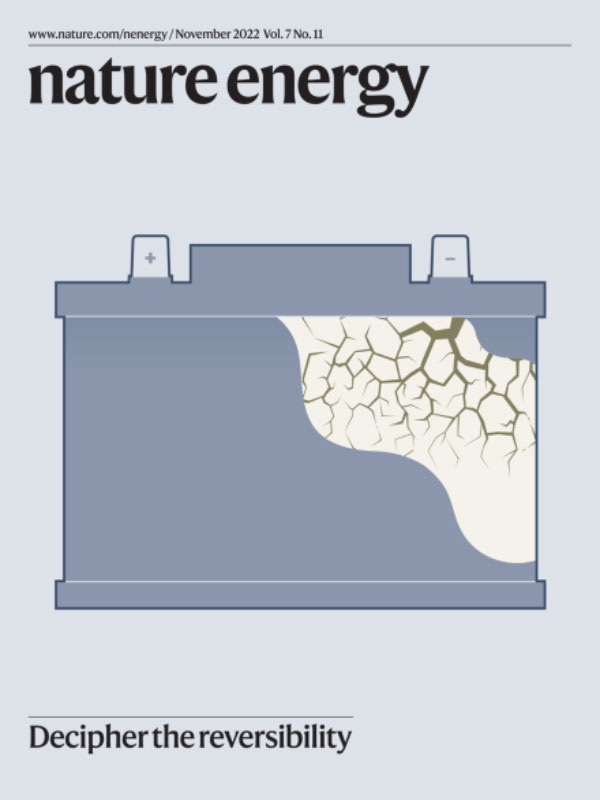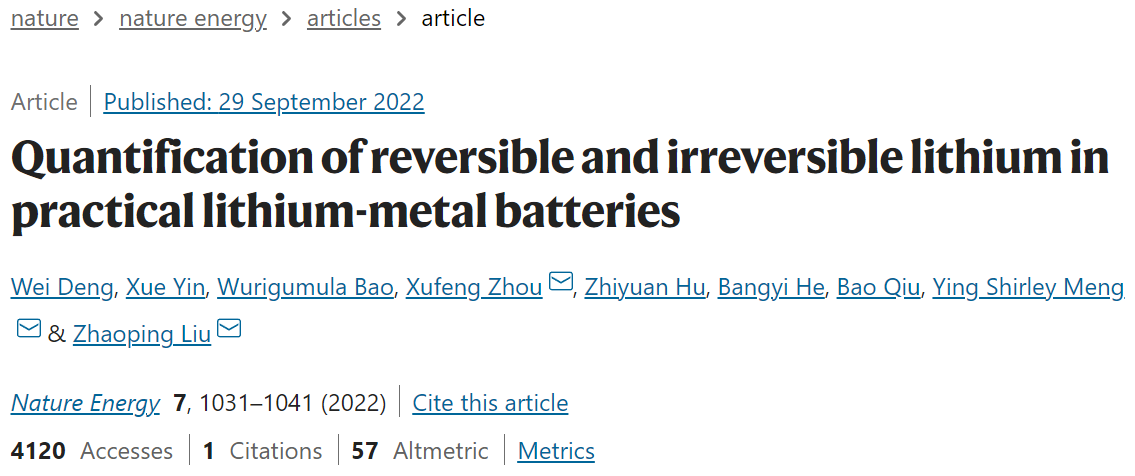Nature Energy: Decipher the reversibility
Nov 20,2022
The image designed by Sphere Studio is selected as the Cover of Nature Energy in Nov.
It is challenging to achieve high reversibility of lithium-metal batteries due to problems such as the formation of dendritic lithium (shown in black) at the anode during cycling. Now, Deng et al. develop an analytic method to quantify lithium in its electrochemically inactive and active states, untangling the complex behaviour of the anode reversibility.

Abstract
Accurate assessment of the reversibility of electrodes is crucial for battery performance evaluations. However, it is challenging to acquire the true reversibility of the Li anode in lithium-metal batteries, mainly because an excessive amount of Li is commonly used. Here we propose an analytic approach to quantitatively evaluate the reversibility of practical lithium-metal batteries. We identify key parameters that govern the anode reversibility and subsequently establish their relationship with the cycle number by considering the mass of active and inactive Li of the cycled Li anode. Using this method, we show that the mass of active Li can be quantitatively distinguished from the mass of inactive Li of the cycled anodes in Amp hour-level pouch cells. This work opens an avenue for accurately assessing degradation and failure in lithium-metal batteries.

PREV: empty

